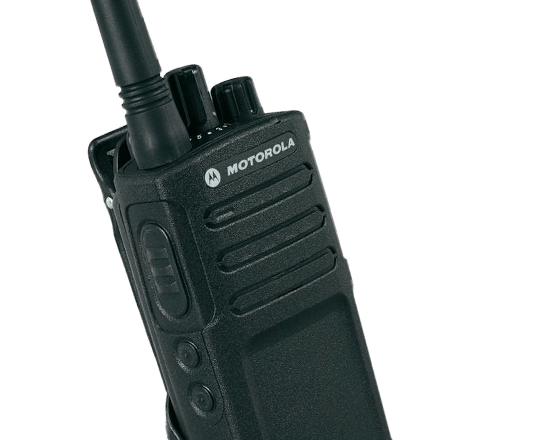Why Is Walkie-Talkie Range So Bad?
INTRODUCTION
A problem and challenge with walkie-talkie / mobile radio communications are the infinite variables that can impact performance. On the larger scale, this might be an unexpected drop in terrain elevation such as a cliff edge or maybe a densely populated valley cut off from all surrounding areas. On the small size (as we're discussing here), this could be a building made out of the wrong material or glass containing a metallic, insulating composite.
Mobile phones work very differently from walkie-talkies. They are a phenomenal achievement in radio communication. When people travel 100mph within their train carriage together with 200 other people all on their phones, it's easy to forget what incredible radio networking is taking place to keep all those handsets connected. I think we're too quick to complain about a dropped signal.
Walkie-Talkies are a challenge within their own right. In my opinion, the sales pitch from the manufacturers (Motorola, Binatone, Retevis, Kenwood etc.) would be better with a bit more clarity around the range offered by the device. Unfortunately, that's not how selling works. Instead, they pick the juiciest number and run with that. In this case, it tends to be 10km.
I've aimed this video at those of you who have bought a set of PMR446 Walkie-Talkies expecting a reasonable coverage, only to discover that you're having reception problems just a few streets away.I discuss five key reasons why this happens and also explain what you can realistically expect from a pair of PMR446 or FRS transceivers. I also include a couple of tips around improving range.
GLOSSARY OF TERMS
Decibel - Used here as a measurement of radio reception. It's important to remember that the decibel scale is logarithmic so a seemingly small difference can be much more significant in reality.
Polarisation - The orientation of a radio antenna. When vertically polarised, the waves travel perpendicular to the surface of the earth.
ERP - Effective Radiated Power. Transmission power when factoring in losses caused by cables and gain caused by specific antenna design. All figures relate to the intensity of RF power required from a half-wave dipole antenna to achieve an equivalent coverage.
POWER
Although 500mW can achieve the advertised 10km on the box (see our 10km walkie-talkie PMR446 range test), this only occurs under ideal circumstances. At such low power, there is no 'wiggle room' when conditions become less than perfect. Power allows radio signals to penetrate the nooks and crannies around an urban environment. Without more power, a simple building or two is enough to absorb enough of the energy for the signal to become impossible to receive. As such, a stated 10km range can quickly become 100m.
FREQUENCY
As a general rule, line of sight becomes much more critical as you move to higher frequencies. 446MHz has a considerably shorter wavelength than, say, CB frequencies used back in the 70's and 80's (they are still used today but very rarely for the same type of application as PMR446).
PMR446 = 67cm
CB27 = 1,111cm
Let's hugely oversimplify propagation and say that with 0.5 watts, we're able to achieve ten full cycles before the strength of the signal has reduced beyond the limits of the receiver. On 446MHz, this allows us a transmission distance of 6.7m compared to 111m on the 27MHz.
Not only that but our 27MHz signal has a much better ability to penetrate buildings and other natural obstacles such as trees and foliage.446MHz is excellent for many reasons (bandwidth, data, small antenna design) but is not as robust when it comes to coverage. As with power, you need line of sight.
FORM OVER FUNCTION
The antenna on a walkie-talkie is generally built to be a compromise. It needs to work, but it also needs to be robust and compact. As a result, most devices use something poorly designed. The power output may still be adjusted to be 500mW, but the antenna won't receive signals as well as it could do.According to online comments, regulations in the UK have been relaxed to allow manufacturers to sell PMR446 radios with interchangeable antennas. Fitting a custom antenna could help you improve performance. Make sure though, that your radio is still within the law.
RADIO POSITION
When installing transmitters, the antenna placement and orientation are critical. That may sound like I'm stating the obvious, but this is worth thinking about when you use your walkie-talkie. If you can make sure that all users are holding their radios with the antenna in a vertical position (or as vertical as is practical) the improvement and consistency of reception can be dramatic.
A mismatch in polarisation between the two transceivers can reduce a signal by 20dB. In real terms, that means the received signal could be as much as 100 times less!Again, this is a massive oversimplification. The same factors around power and line of sight still play their part.
BAD ON BOTH SIDES
In most transmitter/receiver setups one half uses professional grade equipment (usually the transmitter). The receiver (let's say an old kitchen radio) may be poor quality, but it doesn't matter so much because the transmitter is in a great location with a superb antenna.With walkie-talkies, you have a poor quality setup on both sides. Both devices have the same poor antenna. Both devices might be at ground level surrounded by concrete and bricks.
CONCLUSION
From an RF standpoint, it's impressive that PMR446 offer the coverage they do. It's arguably misleading to quote any range figures at all. That's the beauty of RF and radio. It's an unpredictable beast that can always benefit from tweaking and experimentation. If I were you, I would assume no more than the following...
URBAN & BUILT UP - 100m
URBAN MIXED* - 500-1000m
OPEN FIELDS - 1-2km
LINE OF SIGHT** - 10km+
* One radio in a slightly advantageous location such as raised location in a building
** Assumes a clear frequency


